Key Takeaways:
- Understanding the appropriate duration for a dog to use a wheelchair is crucial for their health and comfort.
- Dog wheelchairs are designed to aid dogs with mobility issues, but they require gradual adaptation.
- Regular breaks and monitoring are essential to ensure a positive experience with the wheelchair.
Dogs are not just pets; they are family members who deserve the best care, especially when facing mobility challenges. A common question that pet parents grapple with is, "How many hours a day can a dog be in a wheelchair?" This article aims to provide comprehensive insights into the use of dog wheelchairs, ensuring that your furry friend remains comfortable and healthy.
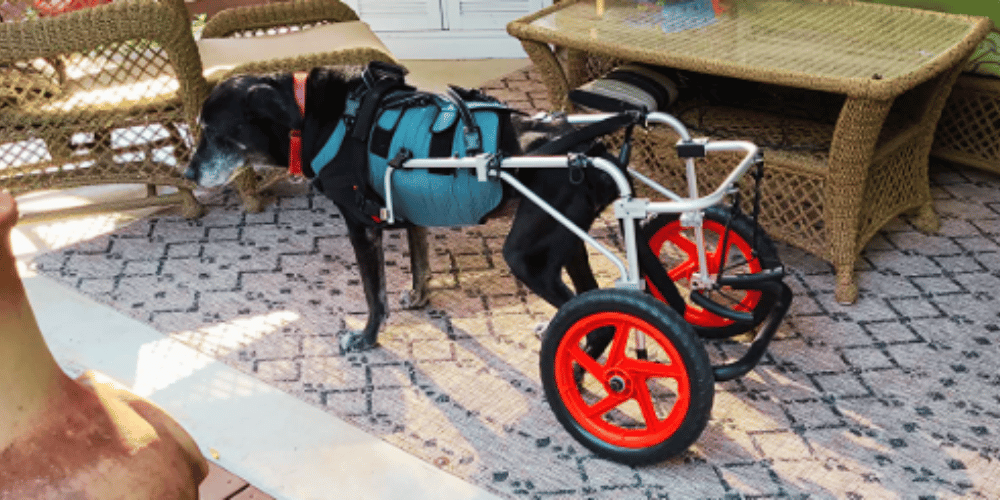
The Basics of Dog Wheelchairs
Dog wheelchairs are specially made frames that support dogs with difficulty walking unassisted. Whether due to intervertebral disc disease, traumatic injury, or age-related weakness, wheelchairs encourage canine mobility. The right wheelchair frame size, tailored to the dog's weight and rear leg height measurement, is essential for a comfortable fit. For instance, a corgi wheelchair is designed for short-statured pets, while large dogs weighing more will need a sturdier, large wheelchair.
Starting with the Wheelchair
When a dog owner hears that their pet requires a wheelchair, it's crucial to start slowly. Dogs need to adjust to the new sensation of being in an upright and standing position with the aid of leg rings support. Initially, a dog lying in a wheelchair might feel unsure, but with patience and high reward treats, even the timid dogs will start to move at their own speed. A few times a day, allowing the dog to stand correctly with the wheelchair makes a significant difference in their confidence.
Determining Wheelchair Time
So, how long can a dog be in a wheelchair? It's not advisable to keep a dog in a wheelchair for more than an hour at a time when starting. This period allows the dog to get accustomed to the sensation and maintain muscle mass without overexertion. As the dog becomes more comfortable, wheelchair time can be gradually increased, always observing the dog's behavior and comfort level.
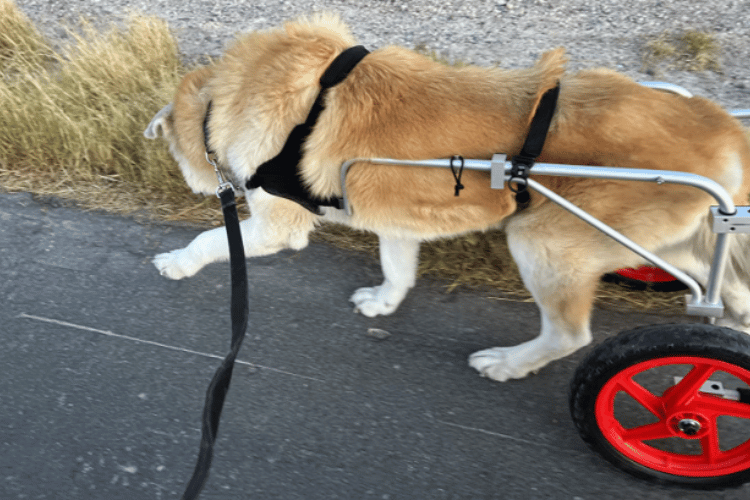
The Importance of Breaks
Regular breaks are vital for a wheelchair dog. After each session, the dog should have the opportunity to rest and sleep comfortably. For dogs with rear leg paralysis, a pillow underneath their hind end can prevent sores and provide comfort. It's also a chance for the dog to lie down in their natural standing position, without the constraints of the wheelchair.
Exercise and Rehabilitation
Dogs exercise in wheelchairs not only to stay active but also to rebuild leg strength. The Walkin' Wheels wheelchair, for example, comes in various sizes to fit dogs from mini wheelchair-sized pets to large dogs. It's important to match the wheelchair to the dog's pace and allow them to exercise without pushing them too hard.
Wheelchair Customization and Comfort
When considering a dog wheelchair, it's crucial to ensure that it is a perfect fit for your furry friend. A specially made frame that caters to your dog's weight and size is essential for encouraging canine mobility without causing discomfort or injury. The Walkin' Wheels wheelchair sizes are designed to accommodate a wide range of breeds, ensuring that from a tiny terrier to a large Labrador, each size dog gets the support it needs. The adjustable features allow for a snug fit, which is vital for your dog's comfort and the effectiveness of the wheelchair.
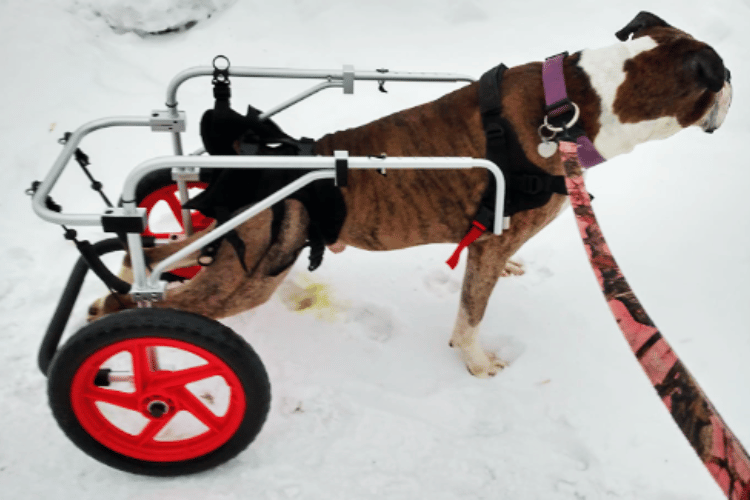
Comfort goes beyond just the right size; it's also about how the wheelchair interacts with your dog's body. Areas like the dog's hind end and rear legs, which are often the most affected by mobility issues, need special attention. Padding around the harness and where the frame touches the dog can prevent sores and discomfort. Additionally, the toe pad is an often-overlooked feature that can protect your dog's paws from dragging, ensuring that their time in the wheelchair is as comfortable as possible.
Incorporating Wheelchair Use into Daily Life
Integrating a dog wheelchair into your pet's daily routine can be a smooth process with the right approach. Start by allowing your dog to wear the harness without the wheels to get accustomed to the feel of the equipment. Gradually increase the dog's experience with the wheelchair by attaching the wheels and letting your dog explore at their own pace. This can begin with just a few hours a day, under close supervision, to ensure they are comfortable and safe. As your dog gains confidence, you can extend the time they spend in the wheelchair.
It's also important to maintain a balance between wheelchair use and natural movement. If your dog's hind end is weak but they still have some use of their rear legs, encourage them to walk without the wheelchair for short periods to promote muscle strength. Always monitor your dog's pace and energy levels to avoid overexertion. Remember, the goal of the wheelchair is to support your dog's mobility and quality of life, not to replace their natural movement entirely. With patience and training, your dog can enjoy a happy and active life, both in and out of their wheels.
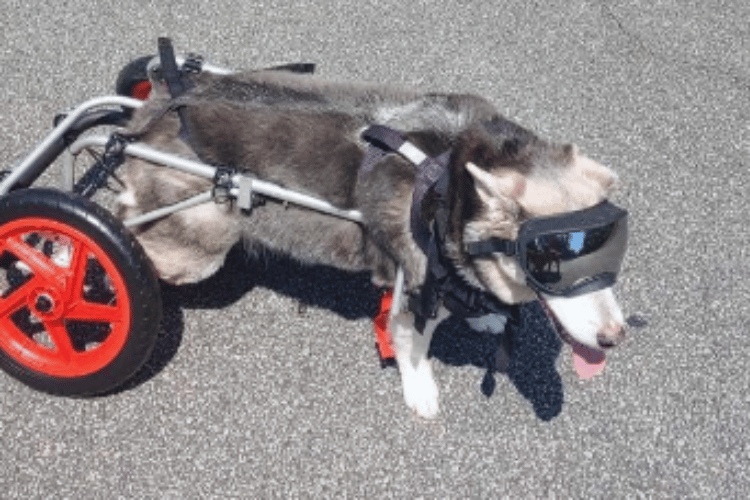
Monitoring Your Dog's Health
While using a wheelchair, it's crucial to monitor the dog's health. Check for any signs of discomfort or sores, especially around the areas where the wheelchair makes contact with the dog's body. Pet parents should immediately notice if the dog's experience is negative and adjust the wheelchair or take a break as needed.
Adjusting to the Wheelchair
Most dogs realize the freedom a wheelchair provides and adapt quickly. However, some may take longer, and that's okay. The key is to let the dog adjust at their own pace, with plenty of encouragement and love. A slight bend in the back legs while in the wheelchair indicates a good fit and proper hind leg support.
Choosing the Right Wheelchair
Selecting the right wheelchair frame size is crucial. A small wheelchair for medium-sized pets or a medium wheelchair for large dogs will not provide the necessary support. The dog's hind end needs to be supported correctly, and the front legs should be free to move without restriction.
Socializing and Interaction
Wheelchairs also allow dogs to interact with other dogs and their environment. Even the dogs that may have been withdrawn due to their mobility issues can regain their social nature. It's heartwarming to see a dog in a wheelchair playing and engaging with other dogs once again.
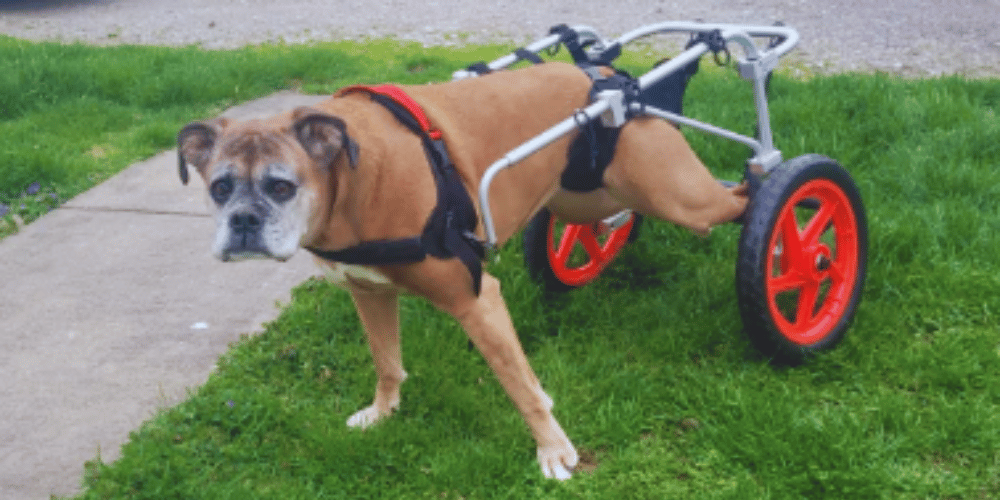
Long-Term Use of Wheelchairs
For some dogs, wheelchairs become a permanent part of their lives. In these cases, it's essential to ensure that the dog can stand upright, walk, and even run in the wheelchair for extended periods, provided they are comfortable and not showing signs of fatigue or discomfort.
Training and Patience
Training a dog to use a wheelchair requires patience and consistency. Using high reward treats and positive reinforcement helps the dog associate the wheelchair with positive experiences. Over time, the dog will learn to navigate different terrains and become more independent.
Summary
In summary, the duration a dog can spend in a wheelchair varies depending on the individual dog's needs, comfort, and adaptation to the device. Starting with short sessions of no more than an hour and gradually increasing the time as the dog adjusts is key. Regular breaks, health monitoring, and ensuring the right fit are essential for a positive wheelchair experience. With patience and care, wheelchairs can significantly enhance the quality of life for dogs with mobility issues.

FAQ Section
Q: Can a dog be left in a wheelchair overnight? A: No, dogs should not be left in wheelchairs overnight. They need to be able to move freely and sleep comfortably without the constraints of the wheelchair.
Q: How long will it take for my dog to adjust to a wheelchair? A: Adjustment times vary. Some dogs may take to it immediately, while others may need a few weeks. It's important to let your dog set the pace and provide encouragement throughout the process.
Q: Can a dog use a wheelchair on all types of terrain? A: Most dog wheelchairs are designed to handle various terrains, but it's important to start on flat, even surfaces. As the dog becomes more adept at using the wheelchair, they can explore more challenging environments.
Thank you for visiting LegitLists we hope this helps you make a legitimate choice!






